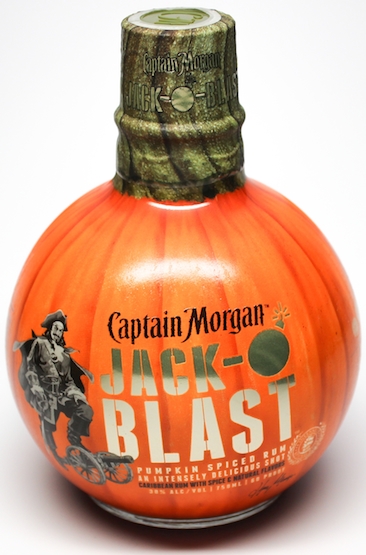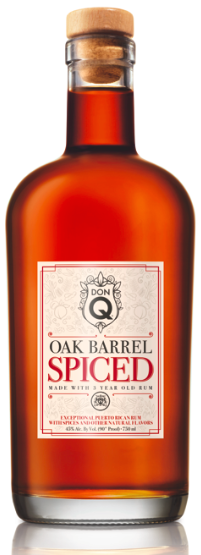If you’re looking for liveliness and interest in rum these days, it’s probably happening in the flavored and spiced sector of the category.
Rum’s overall woes are well known, and the general category was down once again in 2016. But the subcategory from which growth is coming indicates that many consumers, particularly younger ones not attuned to the much-vaunted cocktail renaissance, still enjoy their spirits via the casual, mixed drink, beachside bar-style drinking that spiced and flavored rums offer.
“Rum is certainly facing some headwinds right now and there are more dynamic categories in spirits. But within rum, spiced is one of the more popular,” says Josh Hayes, Senior Brand Manager for Sailor Jerry. “We’re doing well even though the category has stalled.”

Linda Bethea, vice president of Captain Morgan for Diageo, agrees. “It’s no surprise to anyone in the business that the rum category has been fairly flat the last few years. But Captain Morgan has been growing for the past few years on the strength of the original and Flavor Blast lines. We think consumers are always looking for flavor, and we’ve seen with our recent innovations there is definitely an opportunity to deliver more flavor to them.”
In 2016, rum as an entire category shrank by more than 250,000 cases, or 1.1 percent. It’s hard to tease out separate data for brands that are sold in standard, flavored and spiced iterations, but those known best or exclusively for the latter two showed minor to solid growth. Category leader Bacardi was down one percent, even with ten flavors and Oakheart spiced rum. Meanwhile, Captain Morgan was up 0.4 percent, Malibu up an impressive 2.3 percent, and Cruzan was up 1.7 percent, according to data from the Beverage Information Group’s 2017 Handbook Advance.
Watching Shelf Space
While tweaks on the spiced rum sub-category like Captain Morgan Flavor Blast are becoming more attractive to producers lately, flavored rum portfolios are undergoing more scrutiny these days (much the way the mile-long shelf of flavored vodkas has been examined).
“The market leader had the distribution clout to roll out many flavors that just didn’t turn fast enough to keep retailers happy,” says John Eason, COO/EVP of Serralles USA, owner of the Don Q rum line. “As a result there’s a backlash. Like the flavored vodka section, the flavored rum section has been shrinking. The good news is that the premium rums are getting traction, and that opens up opportunities for more producers like ours.”
At Malibu, where flavor is everything, there’s been healthy growth and awareness that too many flavors can become confusing. “Consumers have proven that they like popular flavors they understand,” says Daniel Clarke, brand director USA for Malibu. “Some new ones come in because the flavor is trendy but then interest falls off.”
While there are no current plans to eliminate any of the 14 Malibu flavors, starting in early 2018 the brand will deliver a more direct focus on the tropical flavor iterations – traditional coconut, banana, passionfruit, mango and pineapple – compared to the more offbeat expressions like orange float, peaches and cream and sundae chocolate ice cream.
“I think that as a brand we haven’t gone out of our way to communicate the flavors are separate and that will come across more clearly going forward,” he says. Now Malibu will focus on affiliating the brand with bright and juicy tropical fruit flavors.
“There are a couple things we’ll be shedding from a trade perspective, but the goal is to clear our shelf space. By by focusing on the core set, we are looking to accelerate growth,” Clarke says.
It’s not that new flavors can’t do well – Captain Morgan claims solid success with the latest item in the flavor blast line, Loco Nut, a spiced rum with coconut flavor, and the brand expects big things this fall from the limited-time offering Jack-O-Blast, a pumpkin spice-flavored rum. The two join Cannon Blast in the lineup of cannon ball-shaped packaged spirits.
“What’s really interesting to us is getting more into the shot occasion,” Bethea says. “We’re seeing huge growth in more approachable tasting shots and that’s where we’re trying to play with this portfolio – as a chilled shot.”
Heaven Hill’s Admiral Nelson occupies the value end of the spiced rum spectrum and leans toward the easy, vanilla spiced style, while Blackheart is higher proof (93) and includes a hint of cherry to brighten the flavors, says senior brand manager Hannah Venhoff. There’s also a 101-proof Admiral Nelson with much smaller volume, but she sees opportunity coming from the brown spirits explosion, and thinks a wider range of expressions (whether higher proof, flavor extensions or other tweaks) will help the subcategory grow.

That’s what Don Q has found with its spiced rum. “The higher end of that category is trending higher and that’s what interests us,” Eason says. “We don’t have a full year yet on our Barrel-Aged Spice product, but preliminary results are strong and we continue to get better distribution across the country.”
Eason says the Don Q coconut flavor, like many coconut rums, is proving to be strong, and recently the brand launched a pineapple extension to go with lemon, passion, and mojito flavored extensions.
Creating the Flavor
Flavor profiles, at least in terms of how the various spiced rums are brought to market, don’t seem to differ that much. Captain Morgan is described by Bethea the “original spiced rum made with our secret blend of spices” and cites flavor notes of vanilla, caramel and “warm Caribbean spices.” Sailor Jerry’s two most significant flavors are cinnamon and vanilla, Hayes says, with the important difference being its higher proof cutting through mixed and blended drinks.
“Everyone blends their spiced rums differently,” Eason says. “Some brands are vanilla forward, some cherry. Our Barrel-Aged Spice is three years old and comes in at 90 proof. Time in the barrel gives it a bold oaky flavor and we add zero sugar, only using tropical fruits and spices in the blend.”
One of the issues facing flavored and spiced rums these days is an inability to take advantage of the sort of laddering up in price that other categories, mostly notably whiskeys, have enjoyed.
“Aggressive pricing and marketing is challenging the subcategory,” says Sailor Jerry’s Hayes. “We have a very price-sensitive consumer. Most people enter the rum category when in the formative years of their drinking and they tend to buy on price for things like tailgating and boating. Raising price in the rum category really hasn’t happened. Even the leaders haven’t been able to raise prices and the consumer hasn’t found a premiumization reason, even though they’ll buy high-end whiskey.”
Most of the newer expressions haven’t provided consumers with more pricey options, though Captain Morgan offers a Select Reserve and a 100-proof expression that tend to be priced higher. “Captain Morgan has done a much better job offering options,” Hayes says. “We’ve never expanded, but there will be new stuff coming out from us in mid 2018, and it’s overdue.”
While flavored and spiced rums skew high in general off-premise, on-premise sampling (especially based on chain placements) may have accelerated interest recently.
“We do about 20% in the on-premise and we rely very heavily on building excitement with our on-premise partners,” Clarke says. “With certain on-premise accounts like beach bars and chains, we feel that if we work with them to develop really interesting cocktails that will inspire consumers to sample, they’ll buy the brand off-premise and consume at home.”
Bethea of Captain Morgan agrees. “We view on-premise as a critical channel for recruitment and trial, and so we do things like the Captain Tour, with the captain visiting accounts for sampling and engaging in that channel.”
Hayes says growing Sailor Jerry at on-premise accounts keeps the brand interesting. “For a lot of Americans, that’s where they try new cocktails. We find that when someone goes into a TGIFriday’s or a Red Lobster and they see a drink made with Sailor Jerry available, it can have a major impact both on-premise and off. Those major chain accounts and exposure to a broader consumer base are important for us now.”
Jack Robertiello is the former editor of Cheers magazine and writes about beer, wine, spirits and all things liquid for numerous publications. More of his work can be found at www.jackrobertiello.com.









